World leaders are gathering in New York this week for the 78th session of the United Nations General Assembly (UNGA) to discuss the biggest global challenges and how to address them. Below, Brookings experts share what they will be watching for and highlight critical issues that deserve leaders’ attention.
A summit of renewal for the SDGs?
By John W. McArthur
The U.N. Secretary-General recently worried the Sustainable Development Goals are “disappearing in the rearview mirror” and called for a “rescue plan.” What will it take to get them on track? And who will take responsibility for doing so? These will be hot topics at the U.N.’s SDG midpoint summit, when world leaders convene to assess progress since the goals were set in 2015 and, in theory, reinvigorate efforts out to the 2030 deadline.
U.N. summits can be important drivers of public attention and debate, but the bigger test is how they drive follow-on action. In the lead-up to this SDG summit, diplomatic negotiations have been fraught, and the political outcome document will not likely play a decisive role on its own. Constraints within the global financing architecture for sustainable development have been central to many tensions, with a number of emerging markets and developing economies keen for systemic reforms. U.N.-centric debates, typically led by countries’ foreign ministries, are evolving in parallel to debates at the G20 and elsewhere regarding the multilateral development banks, where finance ministries tend to take the lead. Over the coming year or so, reconciling these debates within and across countries will be crucial for ramping up global momentum on the SDGs and interrelated challenges of climate change.
In the meantime, U.N. leadership has proposed a series of “high impact initiatives” focused on issues like energy, food, education, biodiversity, social protection, violence against women, and digital public infrastructure. If these garner a critical mass of support, they could generate useful advances at a healthy distance from broader geopolitical tensions.
A chance for US leadership on the SDGs
By Anthony F. Pipa
On September 18-19, the president of the U.N. General Assembly will convene the 2023 SDG Summit, inviting heads of state to review the halting progress and widening gaps at the midpoint to 2030. Held once every four years, the SDG Summit will be a centerpiece of UNGA high-level week, and renewed commitment to the goals is a key priority of Global South countries.
All eyes will be on the United States. It has mostly disregarded the SDGs as a meaningful policy framework since their launch and is one of only five countries not to have submitted a formal review at the U.N. of its progress. But the Biden administration has slowly begun to embrace the SDGs, especially among its international development agencies and initiatives.
The Summit gives the U.S. an opportunity to fully and publicly embrace the SDGs, establishing leadership it can leverage for new partnerships and action on its policy priorities, both at home and abroad. It can send a strong signal by having President Biden represent the U.S. at the Summit; by formally committing to a Voluntary National Review, which would include measuring its domestic progress on the SDGs; and by formal commitments to increase and strengthen its support of partners in the Global South.
Any credible public commitment must include its domestic agencies and priorities, recognizing that gaps exist at home while also showcasing the action being taken through recently passed legislation such as the Investment in Infrastructure and Jobs Act (IIJA) and the Inflation Reduction Act (IRA). The Summit is the chance for the U.S. to commit its considerable political heft to mobilizing consequential partnerships and resources during the second half of the SDGs. The moment is now.
New South rising
By Bruce Jones
As more leaders than ever gather in New York for the U.N. meetings, there are many issues on the formal agenda: climate, sustainable development, health, debt, food security, the fallout from the Ukraine war. In real terms, though, one issue dominates: the Global South’s push for new agency and new weight in the changing order.
It’s fashionable for Western politicians to refer to a “rules-based order.” They’ve been less preoccupied with who writes the rules and benefits from them, because for decades the simple answer has been the West. China’s power changes that. Seen from Washington, Beijing’s rise is a threat to both order and stability. That view is increasingly shared by China’s nervous neighbors. But for much of the “rest of the rest,” tension among the world’s biggest powers is more boon than bane.
Those countries—broadly “the Global South,” though the term is imprecise—have long chaffed at a system in which their economic, health, and environmental prospects are heavily shaped by dynamics beyond their control and institutions beyond their reach. Now, China, Russia, the United States, and the Europeans all want their votes, their resources, and their allegiance. That’s going to come at a twofold price: 1) real financing, not hollow promises, for climate adaptation, energy poverty, and debt relief, and 2) a seat at the table, especially in the global financial institutions and multilateral banks that so profoundly shape the economic prospects of the non-Western world.
Western strategists pay scant attention to development issues and multilateral institutions. But in the wider struggle for order, they’re vital battlegrounds. And the West is losing ground.
Priorities for Africa
By Landry Signé
As global leaders gather for the United Nations General Assembly 2023 around the theme “Rebuilding trust and reigniting global solidarity: Accelerating action on the 2030 Agenda and its Sustainable Development Goals towards peace, prosperity, progress and sustainability for all,” this year will be unique for Africa given the myriad of challenges faced by the continent. Beyond the UNGA general debates, where we expect African countries to make their voices loud and clear regarding their role in reimagining multilateralism to solve African and global challenges, three summits and high-level dialogues will be consequential for African countries.
SDG Summit (September 18-19). Africa remains one of the regions of the world with an enormous gap between the SDG targets and achievements. Most African countries are making but little progress, and estimates show that most targets will be missed by 2030 unless policymakers adopt and successfully implement transformational policies. For example, according to the United Nations Development Program, halfway toward 2030, about 575 million people are estimated to remain in extreme poverty by 2030 based on current trends. One of the keys focuses for African leaders at UNGA and the SDG Summit will be the imperative to bridge the gap between the laudable goals and their successful implementation, of which sustainable development financing is a key dimension.
High-level Dialogue on Financing for Development (September 20). One of the biggest challenges faced by Africa is the lack of resources to finance its development. According to the OECD, the sustainable development financing gap on the continent is about $1.6 trillion until 2030, or $194 billion annually through 2030. Financing for development will be at the heart of the agenda for African countries, who will continue to call for a more just global financial architecture where the needs of Africa are prioritized.
Climate Ambition Summit (September 20). As United Nations Secretary-General António Guterres will call on leaders to boost their climate engagement, it is important to mention how critical this topic is for Africa, and not to gloss over its inherent unjustness. African countries are some of the lesser contributors to global warming and carbon emissions but are among those most affected by their adverse consequences, including climate change. Mobilizing the estimated $2.8 trillion needed between 2020 and 2030 to mitigate the effects of climate change will require disruptive global actions and climate ambition, as African countries have committed only a fraction of the required resources. Here, too, African delegations will be highly active in voicing their need for financing resources from global partners to help mitigate the adverse effects of climate change.
UNGA 2023 represents a unique opportunity to discuss and debate new ideas and solutions and, most importantly, to walk the talk for their successful implementation.
Intersection between gender, climate, and education
By Amna Qayyum
Last year’s Transforming Education Summit (TES) powerfully repositioned education within a global reform agenda, highlighting how the COVID-19 pandemic has intensified existing educational disparities. At the same time, TES situated education systems as a crucial lever of change, mobilizing political will for collective and sustained action.
A year out from TES, young people worldwide continue to grapple with the challenges posed by the global polycrisis. Global education stakeholders should continue to take action addressing how these challenges exacerbate existing socio-economic inequities, even as positive strides continue toward ensuring access to education.
One key topic where such focus on equity and inclusion will be particularly salient during UNGA is the intersection between gender, climate, and education. On the one hand, there is increasing recognition of how the climate crisis exacerbates education inequities, with evidence pointing toward the gendered impacts of climate change on access and learning, especially for historically marginalized communities across the Global South. On the other hand, education also has the unique potential to unlock a more climate-resilient future.
As global leaders gather for the Climate Ambition Summit and other sideline events, designing more gender-transformative and climate-informed education systems should be on the agenda. This will include challenging discussions, for example, recognizing why particular communities—especially girls and young women—are more vulnerable to the climate crisis due to intersecting systems of oppression, and critical to designing solutions to these pressing challenges. Translating such conversations into action should then include centering the narratives and needs of historically marginalized groups in decisionmaking, allowing them to more fully exercise their agency and making shared progress towards equity, inclusion, and also social justice.
Africa most affected by setbacks to the hunger SDG
By Danielle Resnick
As the halfway mark to the 2030 Agenda for Sustainable Development approaches, there is growing alarm that SDG 2—“End Hunger, Achieve Food Security and Improved Nutrition and Promote Sustainable Agriculture”—will not be achieved. According to a recent SDG report released by the U.N., the world’s hunger levels, which are measured by prevalence of undernourishment, are back to 2005 levels and, based on current trajectories, 600 million people will be hungry by 2030. Africa has experienced the least progress on this SDG target and as of 2022, it is home to more than 38% of the world’s hungry population. Many of the reasons for this trajectory are not surprising, including the lingering impacts of the COVID-19 pandemic, food and fertilizer price rises precipitated by the Russia-Ukraine war, the impact of climate shocks on agricultural production, and recurrent political instability in the Sahel and Horn of Africa. Moreover, tackling hunger is complex, requiring complementary investments in sustainable food production, infrastructure, trade and macroeconomic policy, and social protection programs to make food available, affordable, accessible, and safe.
Even so, the lack of progress is disappointing given the massive growth in food and nutrition advocacy and financing events over the last decade, including the establishment of the Scaling Up Nutrition movement, three Nutrition for Growth Summits, five Nutrition for Resilience conferences, and two U.N. Food Systems summits. As such, a major area for discussion at UNGA and among nutrition advocates is what financial commitments have been made by the international community to tackle hunger thus far in Africa? Were they targeted to the most appropriate priorities? Did they ultimately result in actual disbursements? And how are those disbursements properly coordinated and harmonized with African governments’ own food and nutrition development strategies? As demonstrated by recent protests in Kenya and Nigeria over subsidy cuts that are causing a rising cost in living, these questions are particularly salient as the region navigates a looming debt crisis requiring governments to adopt austerity measures that will further impact food affordability.
Digital resilience
By George Ingram and Priya Vora
Among the questions being addressed at the U.N. SDG Summit is how can rapid technological change enhance resilience and ensure a people-centered and human rights-based approach to sustainable development?
The most dramatic answer is provided by Ukraine’s successful resistance to Putin’s war. Not a silver bullet, but when joined with political will and safeguards to foster citizen rights and trust, digital government can meet the needs of citizens even in the most trying circumstances.
The Russian invasion was fortunately preceded by a decade of investment that produced a robust government platform called Trembita, the introduction in 2019 of the app Diia that allows citizens to access government services through personal devices, and President Zelensky’s doubling down on digital transformation.
The outcome empowered the government to quickly adapt its digital relationship with its citizens to:
- Provide citizens with temporary identification papers to show police and border guards.
- Provide internally displaced people with identification and financial support.
- Empower citizens to report on movement and coordinates of Russian troops.
- Purchase war bonds.
- Report on damaged property.
- Access TV and radio broadcasts.
Digital capability has allowed the Ukrainian government to provide essential services and communicate with citizens wherever they are located and has empowered citizens to work together in the face of an existential threat.
Ukraine and war are not the only examples of digital’s contribution to sustainability. Responding to the outbreak of COVID-19, it took Togo 10 days to use its digital platform to build Novissi to provide citizens digital cash transfers, and digital communications are providing essential information and linkages to farmers, health care workers, and small- and medium-sized businesses.

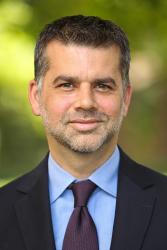
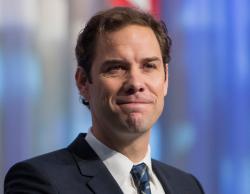

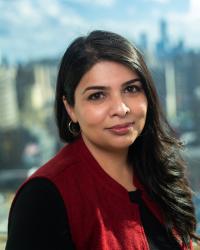


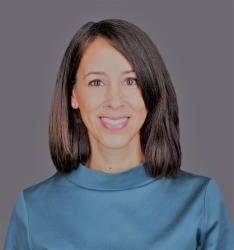
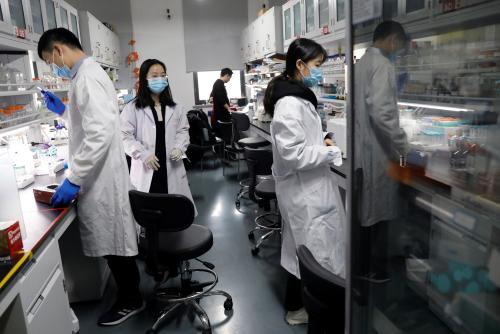
Commentary
Brookings experts on what to watch for at the 2023 UN General Assembly
September 15, 2023